|
HOME: www.hiltonpond.org |
|||
THIS WEEK at HILTON POND Subscribe for free to our award-winning nature newsletter (Back to Preceding Week; on to Next Week) |
11-19 Nov 2017 & 20-28-Jan 2018 Come be part of a real |
MARCH 2017: The month of March is unpredictable in the Carolina Piedmont, often with "unseasonably" low or high temperatures and even an occasional snow. March 2017 was no exception and brought such diverse phenological happenings we wondered whether it was winter, spring, or even summer. Some days experienced lion-like bluster and seemed hot enough to suit a Desert Fox, while others were more in line with what a Polar Bear might desire. The following photo essay depicts some of those in-and-out-of-seasonal occurrences at Hilton Pond Center during the just-finished 31-day period.
1 March 2017 March started out at Hilton Pond Center with an unusually high midnight low of 60.1° and an even higher afternoon peak of 76.3°. We took advantage of the weather and set a new 36-year record for the Center by picking up three aluminum beer bottles and 76 aluminum cans (mostly Miller Lite, with only a half dozen soft drinks)--all thrown out along our 1,850 feet of road frontage. A big 7-gallon collection bucket (above) was nearly overflowing even after the cans were flattened via strenuous foot effort. You can bet we'll be taking these castoffs to our local scrap yard and exchanging them for cash to go toward operating expenses. The Center can use this indirect donation from the local drink-and-toss community but doesn't really appreciate such thoughtless littering. If folks really want to help our effort, it would be a lot easier on everyone if they just made a monetary gift via PayPal: All text, maps, charts & photos © Hilton Pond Center
All text, maps, charts & photos © Hilton Pond Center 6 March 2017 The photo above is of just the 27th Red-winged Blackbird banded at Hilton Pond Center in 36 years, so we'd call this one of our least common species. On 6 March he was in a trap baited with cracked corn and mixed seeds. Back in the old days when the pond was rimmed with cattails and alders, we occasionally would hear the gurgling spring song of red-wings--konk-a-ree!--but we don't think they ever nested locally. These days we're far more likely to see them briefly during winter in mixed flocks with other blackbird species. (P.S. Red-winged Blackbirds are one of only a few species for which we wear a glove during hand-held photography. Check out that stiletto-like bill and you'll understand why. Ouch!) All text, maps, charts & photos © Hilton Pond Center
All text, maps, charts & photos © Hilton Pond Center 7 March 2017 Although our long, hot, dry "winter" has dropped water levels in Hilton Pond four feet below normal, the view from the Center's office window was still pretty nice on 7 March--especially since the bloom of Forsythia planted more than 40 years ago by a previous owner was much fuller than usual. These shrubs bloomed about a week or so early this year--undoubtedly because of unusually warm weather spells during what should be cold weather months. And, yes, those are ready-and-waiting hummingbird feeders in the photo; we maintain several year-round in case of winter vagrant hummers. (For the record, the Center has hosted two one-day-and-gone Rufous Hummingbirds since 1982, both banded and released in November. One was recaptured almost exactly a year later in Ohio!) All text, maps, charts & photos © Hilton Pond Center
All text, maps, charts & photos © Hilton Pond Center 8 March 2017 You know the weather is warmer than usual at Hilton Pond Center when two-inch-long Pigeon Horntails, Tremex columba (above), start emerging from old logs weeks ahead of schedule. Such was the case on the first of March when we saw our first adult horntail, and again on the 8th when we had a camera handy. Horntails--with their black and yellow banded bodies and four membranous yellow-tinted wings--are often mistaken for members of the Vespid Wasp Family (Vespidae), but the latter have pinched waists; a horntail (Soricidae) is cylindrical throughout. Horntails--sometimes called "Wood Wasps"--are named for a stinger-like projection on the upper tip of the abdomen, but horntails can't sting. (We're at a loss to explain why this particular species is called "Pigeon" Horntail. Send us a note at INFO if you know.) The one in the photo appears to have two "stingers" because she's a female with a long ovipositor. She uses this structure to inject an egg into a tree trunk or limb, after which she also deposits a mini-packet of White Rot Fungus, Daedalea unicolor, that causes the wood to decay a little--making for easier eating by her larvae when they hatch. Fortunately, these well-endowed female horntails don't often lay eggs in seasoned timber such as that used to build houses, but since larvae can take two years to develop the adults sometime emerge in newly constructed homes! Living trees horntails choose as hosts--ash, cottonwood, elm, and Silver Maple--are usually near the end of their life spans and already affected by fungi and other insects, so it's not likely these black-and-yellow insects actually harm the forest. All text, maps, charts & photos © Hilton Pond Center
All text, maps, charts & photos © Hilton Pond Center 11 March 2017 Ever since last fall, the most dominant individual bird around the feeders at Hilton Pond Center has been a Northern Mockingbird (NOMO) that apparently likes suet--a LOT. Day in and day out this mocker has been very adept at chasing other birds away from our umpteen suet feeders; it would vigorously fly back and forth from one suet block to another, harassing everything from Downy Woodpeckers to Pine Warblers to Carolina Wrens. The mockingbird would go at it for hours on end, possibly giving up its super-territorial behavior only when exhaustion finally set in. We kept hoping to catch this bird, but nearly all previous NOMO have been snared in mist nets rather than the traps deployed all winter. However, on the afternoon of 11 March the Northern Mockingbird ventured into a ground trap designed for doves and baited with cracked corn, white millet, and black sunflower seeds, becoming only the 173rd NOMO captured and banded at the Center since 1982. With the bird in-hand at last we were able to examine it closely enough to see it was a second-year individual that hatched in 2016. This determination came because its eye was a mottled yellow; a fully adult mocker should have a pale iris that is uniformly crystal-clear yellow. (Alas, NOMO are sexually monomorphic so we couldn't tell whether it was male or female. Both sexes have that prominent white wing spot.) We've never understood why we've banded so few Northern Mockingbirds in 36 years at the Center; perhaps a few resident mockers are so territorial they consequently keep others of their species from entering the property for capture and banding. All text, maps, charts & photos © Hilton Pond Center
All text, maps, charts & photos © Hilton Pond Center 12 March 2017 When it was 80 degrees in February and you scoffed at Hilton Pond Harry (our weather-wise White-footed Mouse who predicted six more weeks of winter), we warned you'd pay for it in March--and Harry was right! Light snowfall on the late evening and morning of 11-12 March anointed Hilton Pond Center with exactly one inch of wet white stuff. (Oddly, the pond has more pollen than snow along its margins!) As often happens in the Carolina Piedmont, this "dusting" of frozen precipitation started melting almost as soon as it hit the ground and was essentially gone by late afternoon. Even so, Hilton Pond Harry was feeling very mousely smug about his previous prognostication on Groundhog Day. All text, maps, charts & photos © Hilton Pond Center
All text, maps, charts & photos © Hilton Pond Center 13 March 2017 The twelfth of March was a big day for Chipping Sparrows (above) at Hilton Pond Center--not because it snowed but because that species tied and crept ahead of White-throated Sparrows as our eighth most commonly banded bird. We added another one on the 13th, bringing our CHSP total to 2,154 in 36 years of banding work. Chippies have constructed delicate nests on the property and lined them with animal hair--especially in the 1990s when Eastern Red Cedar trees were prominent; these days, they are most numerous locally in March. In 2017 they came in a week or so early, perhaps because of our unusually warm "winter." We suspect many of our cold weather Chipping Sparrows are temporary residents that will migrate back north as spring unfolds. It's interesting, however, that one we banded in April 1994 was recaptured and released by another bander in January 2015--SOUTH of us in Gainesville, Florida!
All text, maps, charts & photos © Hilton Pond Center We also captured and banded a Chipping Sparrow (above) at Crooked Tree in Belize during our mid-March 2014 Operation RubyThroat hummingbird expedition. Members of that disjunct population are non-migratory and seem darker in facial and body plumage than those up here at Hilton Pond. All text, maps, charts & photos © Hilton Pond Center
All text, maps, charts & photos © Hilton Pond Center 14 March 2017 On 13 March Chipping Sparrows (CHSP) tied and overtook White-throated Sparrows (WTSP) as the eighth-most-commonly banded bird species since 1982 at Hilton Pond Center. Then, on 14 March, we banded our 2,153rd WTSP (above)--which still leaves them one behind the chippies' total. One reason CHSP caught and surpassed WTSP is because we've banded just THREE white-throats since 1 Jan--by far our lowest number in the Jan-Mar period in 36 years. We're at a loss to explain why WTSP have been in decline here for the past decade or so but can report a similar phenomenon locally for Dark-eyed Juncos. (We've caught NO juncos in 2017!) Still scratching my head on this one. A big factor might be vegetational succession and the loss of grassy and shrubby habitats at the Center. Incidentally, White-throated Sparrows occur in two different color morphs: Bright and dull. Today's bird was bright, which was not an indication of its sex; both male and female occur in either plumage--although bright males in breeding attire seem to be especially flashy. All text, maps, charts & photos © Hilton Pond Center
Click HERE for larger map All text, maps, charts & photos © Hilton Pond Center 17 March 2017 The 17th of March is the day most people--even non-Irish--associate with St. Patrick and the "wearing of the green." However, for Hilton Pond Center it's the day we traditionally remind folks in the South Carolina Piedmont to hang a sugar water feeder in anticipation of Ruby-throated Hummingbirds arriving from the Neotropics. These tiny migrants don't usually show locally until the end of the month, but better to be proactive and get those little hummers coming to YOUR house rather than your neighbors! If you live north of us in York SC you have a little more time, as indicated on the calendar map (above). Feel free to share this time line with all your hummingbird-loving friends and family. All text, maps, charts & photos © Hilton Pond Center
All text, maps, charts & photos © Hilton Pond Center 19 March 2017 Horrors! The 42nd Yard Bird of the year for Hilton Pond Center was a European Starling (see our file photo above of a breeding male with blue base to bill). Today we observed two of them flying in and out of one of our Wood Duck boxes, a suspicious sign they might like to nest in this spacious artificial cavity. We've always been relieved the starling plague suffered by many who feed backyard birds has never fallen on the Center. In fact, in 36 years we've banded only eight of these foreign invaders. Meanwhile, two pairs of Wood Ducks were on the pond on the morning 19th, perhaps wondering why the starlings are trying to move in. There goes the neighborhood! All text, maps, charts & photos © Hilton Pond Center
All text, maps, charts & photos © Hilton Pond Center 21 March 2017 Hilton Pond Center's "Bird of the Day" for 21 March--and maybe the week or the whole month--was an adult male Rusty Blackbird (above) just coming into breeding plumage. (Notice the brown flecks on his head, nape, and back; these will be wearing off very soon. He'll probably help a little by preening.) This is only our eighth local sighting of this species since 1982, including six individuals banded in various winters. We were pleased by our latest encounter because rusties are getting harder and harder to find; avian experts believe the population is about 85-90% lower than it was 40 years ago--and no one is quite sure of the cause. It might be habitat loss, insecticides in food and grains they eat, avian flu and West Nile, genetics, a combination of these--or something else entirely. In any case, we photographed this Rusty Blackbird through the window glass and watched as it worked the Center's water garden, systematically flipping over rotten leaves for whatever nutritious migration-fueling invertebrates might dwell beneath. From Hilton Pond he's likely off to Quebec or Newfoundland where about half the world's Rusty Blackbirds breed. Good flight! All text, maps, charts & photos © Hilton Pond Center
All text, maps, charts & photos © Hilton Pond Center 22 March 2017 After seeing those two European Starlings investigating a Wood Duck box on Hilton Pond, we went out on 22 March to see if those invasive cavity-nesters had set up shop. We were pleased to find no evidence of starling nest material within the box in question, so we added few handfuls of fresh wood shavings and went on to check five other boxes on our pond and another that is partly on the property. Two contained rather large paper wasp nests--we managed NOT to get stung this year--and two more were filled with sticks from Eastern Gray Squirrels that somehow to leaped onto the boxes from nearby branches. (These boxes were cleaned in January, so the squirrels must have visited since then. The boxes were no longer being used, so we tossed the sticks and added new wood shavings.) We approached the final box with some disappointment because this could be the first year since 1982 that Wood Ducks had not used at least one of the Center's boxes. Never fear, however. When we waded up to the box with bucket and ladder a female woody exploded from the entry hole and flew into the woods. We quickly opened the box and with iPhone camera took the photo above of 16 cream-colored eggs in a mass of duck down. Since ducks lay an egg a day this hen must have started laying at latest during the first week of March, but it's possible she began sometime in late February. Oddly, even though the occupied box is within view of our computer desk, never once did we see the secretive female enter or leave, and not until yesterday did we observe the drake paddling around near the box. We'll try to check the nest again in a day or two. If there are any more eggs than 16, we can count backwards and know when the first egg was laid. We also can predict when the eggs will hatch since they will do so on the same day. We suspect, however, the female was in the box incubating rather than to just lay an egg, which means we won't be able to determine when the last egg was laid, when incubation began, or when hatching and fledging will occur. All text, maps, charts & photos © Hilton Pond Center
All text, maps, charts & photos © Hilton Pond Center 23 March 2017 We've been watching an established resident pair of Eastern Bluebirds (EABL) going in and out of nest boxes almost all winter at Hilton Pond Center, but not until 23 March did we find any indication of nest building. One box held a quarter-inch layer of pine needles that likely will be added to if both potential parents decide they actually like that particular location. On the 23rd we also trapped and banded a half-dozen Chipping Sparrows, our predominant species now that Purple Finches and American Goldfinches have "flown the coop". In one ground trap we were a little surprised to find a new female EABL (above)--NOT the banded one involved in nest box selection. It's interesting this somewhat-brighter-than-usual-for-a-female bluebird was caught in a trap baited with cracked corn and various seeds (white millet, black sunflower, milo, and thistle). Eastern Bluebirds are known as fruit and insect eaters, so either this particular bird was really hungry, curious, or seeking invertebrates that likewise may have been attracted to seed. Some folks report that their bluebirds come to seed feeders all winter--especially if sunflower hearts are offered; we doubt EABL would be very efficient at cracking open shelled seed. Now that today's bird is banded it will be interesting to see if she has a mate--or finds one--and if she sets up housekeeping in one of the remaining nest boxes. (It's always possible she was a migrant just passing through, and sometimes young bluebirds from the previous year end up not breeding at all.) All text, maps, charts & photos © Hilton Pond Center 27 March 2017 We followed our own advice at Hilton Pond Center and had six hummingbird feeders up by St. Patrick's Day, acknowledging that our early local record for an unbanded RTHU is 27 March--set in three different years (1991, 2011 & 2014). That being the case, we should NOT have been surprised to look out the office window on the 27th this year to see that first ruby-throat in one of our traps! How astounding it is to have our earliest hummer arrive on the same calendar date in four different years!
All text, maps, charts & photos © Hilton Pond Center This male had pristine plumage (above)--to be expected for a bird just returning from "winter vacation" and a full molt in the Neotropics--but he looked a little different than most ruby-throats; his iridescent gorget had a distinctly bronzy cast. A male RTHU throat isn't really red in the first place; i.e., there's no red pigment and the gorget appears red because of the scattering of light caused by tiny grooves and air bubbles in the feathers themselves. The distribution and shape of those microscopic structures undoubtedly varies a bit from male to male, allowing for variation in throat color from ruby red to more orange--hence the appearance of today's bird. In our experience, many adult male RTHU have bronzy throats by the end of the breeding season, probably because wear and tear on the feathers (and perhaps UV damage) alter their structure ever so slightly. In any case, we were elated today to have our first Ruby-throated Hummingbird of 2017 and look forward to challenging last year's record-smashing total of 372--almost 130 more than our previous high. Let the hummingbird wars begin!
All text, maps, charts & photos © Hilton Pond Center
All text, maps, charts & photos © Hilton Pond Center 28 March 2017 After tying on 27 March Hilton Pond Center's earliest spring dates for Ruby-throated Hummingbirds, the next day we had our second-earliest return of a RTHU banded locally in a previous year--another adult male. (Our previous early return came last year on 26 March.) This bird was especially interesting because his band number (H81054) revealed we caught him as a hatch-year bird back on 6 September 2014, making him a fourth-year ruby-throat. Curiously, this was his first recapture, so who knows where he's been since his original banding encounter in 2014. He was also unusual in that very few birds we band in September during fall migration ever return. If you scroll up on this page you'll see our photo of yesterday's male and his iridescent gorget with a bronzy cast--rather than the ruby-like color. Today's recapture (see photo just above) was more red. As with any species, every Ruby-throated Hummingbird is just a tiny bit different from its peers. All text, maps, charts & photos © Hilton Pond Center
All text, maps, charts & photos © Hilton Pond Center 30 March 2017 At dawn on 30 March conditions looked perfect for running mist nets at Hilton Pond Center: The sky was completely overcast and the air was still--making nets less visible than on sunny, windy days. Thus, for the first time this spring we deployed nets closest to the old farmhouse--just four of them--and sat back to see what might get snared. It didn't take long, with birds hitting the nets fairly regularly until 7 p.m. closing time as rain came in from the southwest. The banding table was indeed a busy place on the penultimate day of March, with a a very satisfying final tally of 52 birds banded from 13 species!
In addition to these new birds we had a number of returns--including five second-year chickadees banded locally last summer as recent fledglings when they could not be sexed. (Talk about site-fidelity!) One chickadee turned out to be a female with an active brood patch, while the others were males with noticeable cloacal protuberances. A big benefit of having a permanent banding station where returns are likely is some re-encounters allow us to determine sex after birds come into breeding condition.
All text, maps, charts & photos © Hilton Pond Center Also of significance on the 30th was a male Carolina Chickadee (above) banded as a bird of unknown age and sex 'way back in Dec 2012; he's now at least an after-5th-year bird. Documenting such longevity through returns and recaptures is yet another valuable aspect of long-term banding projects like the one at Hilton Pond. All in all, we'd say 30 March was a pretty good day. All text, maps, charts & photos © Hilton Pond Center
All text, maps, charts & photos © Hilton Pond Center 31 March 2017 January and February 2017 were unusually warm at Hilton Pond Center but March was a month of extremes, with a low of 23.1°F on 16 March followed just six days later by a sweltering 87.2°. There was that one-inch snowfall on the 12th, with a 31-day liquid precipitation total of 3.04" over nine different days. The month's highest zephyr was 27 mph on 10 March, bookended by gusts of 25 and 22 on the first and last days, respectively. Despite several unusually warm temperature readings, Mother Nature went about her March business just as before. Blue Jays (above) and other songbirds still came to feeders, Wood Duck hens laid and incubated their eggs, and the Center's first Ruby-throated Hummingbird showed up right on schedule after six months in the Neotropics. It's somehow reassuring that despite peculiar weather everything else about March was entirely predictable--even if we did have to pick up all those discarded beer cans along our roadside. All text, maps, charts & photos © Hilton Pond Center Don't forget to scroll down for Nature Notes & Photos, 
Checks can be sent to Hilton Pond Center at: All contributions are tax-deductible on your |
|---|
|
"This Week at Hilton Pond" is written and photographed by Bill Hilton Jr., executive director of Hilton Pond Center for Piedmont Natural History
|
|
|
Please refer "This Week at Hilton Pond" to others by clicking on this button: |
Comments or questions about this week's installment? Send an E-mail to INFO. (Be sure to scroll down for a tally of birds banded/recaptured during the period, plus other nature notes.) |

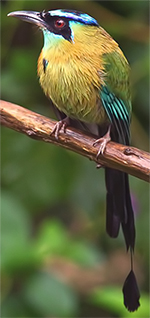 JUST ANNOUNCED!
JUST ANNOUNCED! 

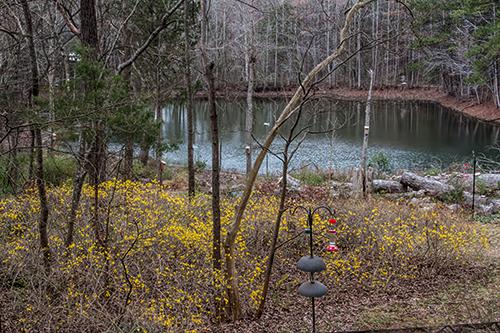
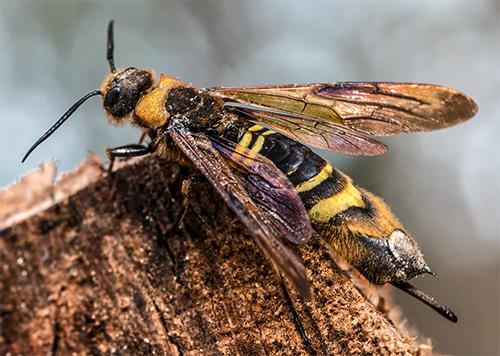

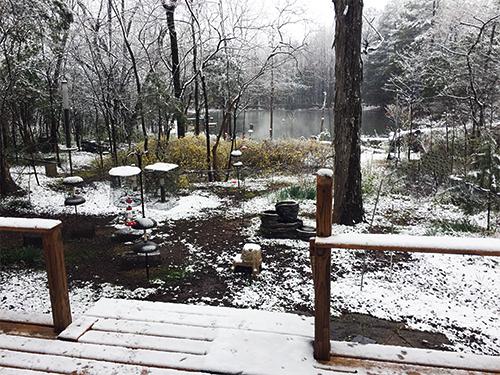

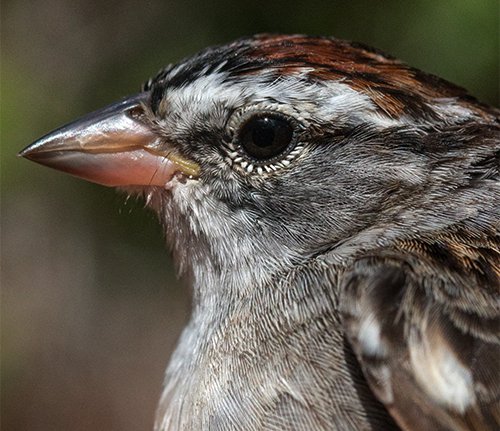


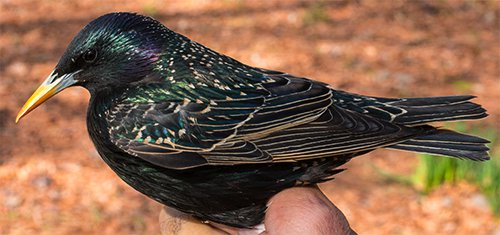
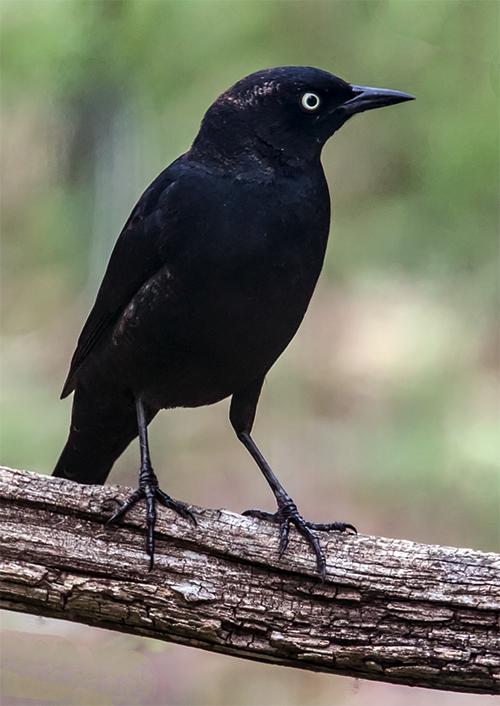
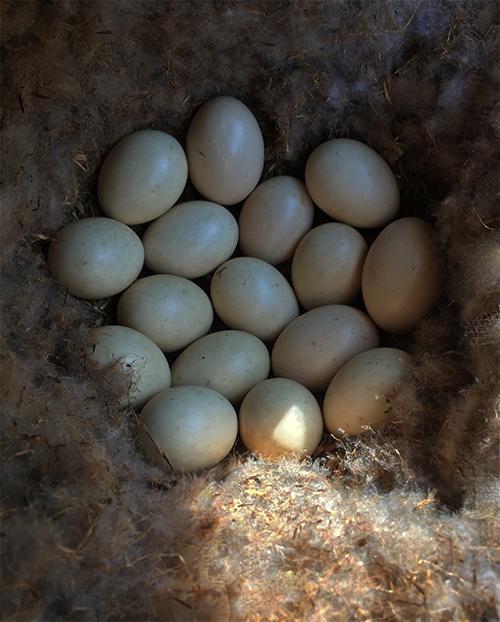
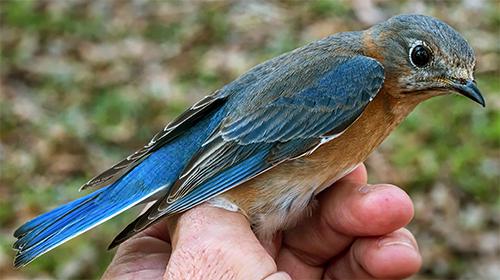
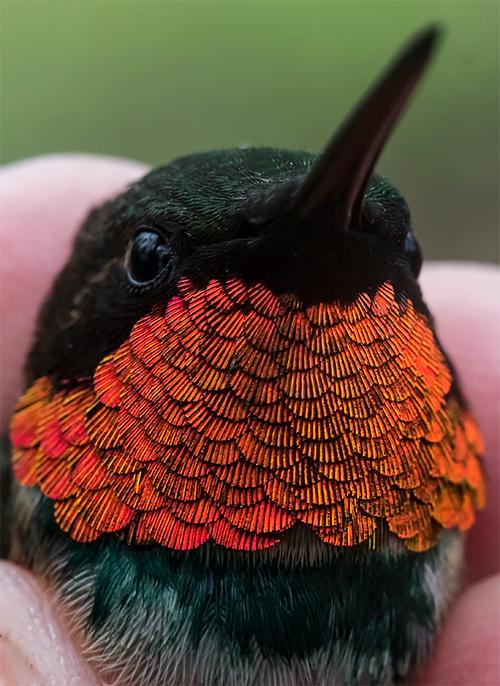

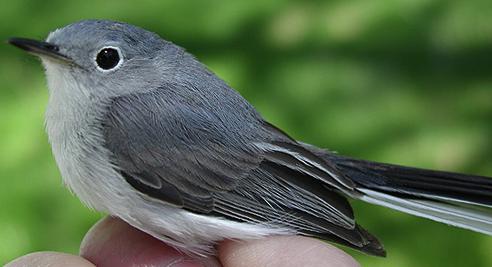
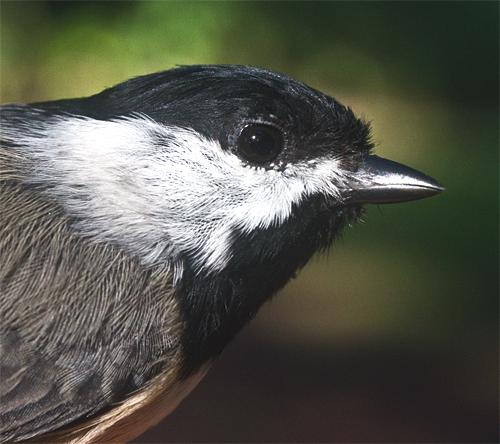
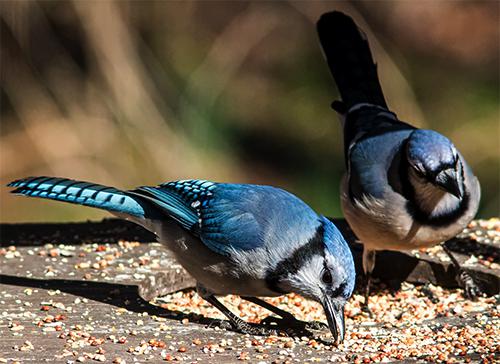








 Oct 15 to Mar 15:
Oct 15 to Mar 15: Please report your
Please report your